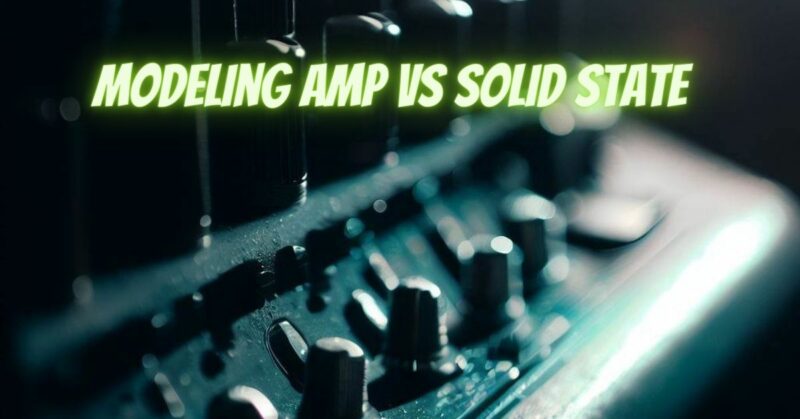The world of guitar amplification is a realm of diverse choices, each offering a distinct avenue to shape your sound. Among these choices, the debate between modeling amps and solid-state amplifiers has garnered significant attention. Let’s delve into the characteristics, benefits, and considerations of each to help you navigate this sonic landscape.
Modeling Amps: The Digital Chameleons
What They Are: Modeling amps are the chameleons of the amplifier world. They harness digital technology to simulate a range of amplifier and cabinet tones, emulating iconic models from various eras and brands. By manipulating digital algorithms, modeling amps offer a comprehensive palette of sounds within a single unit.
Key Advantages:
- Versatility: Modeling amps shine in their ability to replicate the sounds of multiple amps, effects, and cabinets. From vintage to modern tones, they offer a vast array of options that cater to different musical genres.
- Portability: Many modeling amps are compact and lightweight, making them ideal for gigging musicians who require a variety of tones without the bulk of carrying multiple physical amplifiers.
- Affordability: Compared to acquiring a collection of high-quality physical amplifiers, modeling amps are often more budget-friendly.
- Recording and Practice: Modeling amps usually come with direct recording capabilities, allowing you to capture studio-quality sounds without complex microphone setups. They are also great for practice sessions with headphone outputs for silent playing.
Solid-State Amplifiers: The Reliable Workhorses
What They Are: Solid-state amplifiers use transistor technology to amplify the guitar signal. They lack the vacuum tubes found in tube amps, resulting in a distinct sonic signature.
Key Advantages:
- Reliability: Solid-state amps are known for their durability and consistency, requiring less maintenance compared to tube amps. They’re less susceptible to damage from shocks and vibrations.
- Clean and Transparent Tones: Solid-state amps deliver clear and transparent sound, making them suitable for players who seek a faithful representation of their guitar’s natural tone.
- Immediate Response: Solid-state amps typically have quicker response times, providing immediate attack and punch in your playing.
- Affordability and Efficiency: Solid-state technology tends to be more cost-effective to produce, resulting in amplifiers that are often more affordable. They are also energy-efficient and generate less heat.
Considerations When Choosing:
- Tonal Preference: The heart of the debate lies in tonal preference. Modeling amps offer a plethora of tones, while solid-state amps provide a distinct, transparent sound. Consider which sound aligns with your musical goals.
- Live Performance vs. Studio/Practice: Modeling amps are versatile for live performances, offering a range of tones. Solid-state amps are dependable and efficient for practice and recording situations.
- Budget: Modeling amps can be cost-effective for their versatility, while solid-state amps are generally more affordable upfront.
- Tech Savviness: Modeling amps may require a learning curve to navigate the myriad options. Solid-state amps tend to be straightforward in operation.
The choice between modeling amps and solid-state amplifiers hinges on your tonal preferences, performance needs, and budget. Modeling amps offer a wealth of sonic possibilities in a single package, while solid-state amps provide reliability and transparency. Both options have their strengths, and your decision should align with your musical ambitions, playing style, and desired sonic landscape. Whichever path you choose, rest assured that both modeling amps and solid-state amps are formidable tools that can help you carve your unique musical identity.


